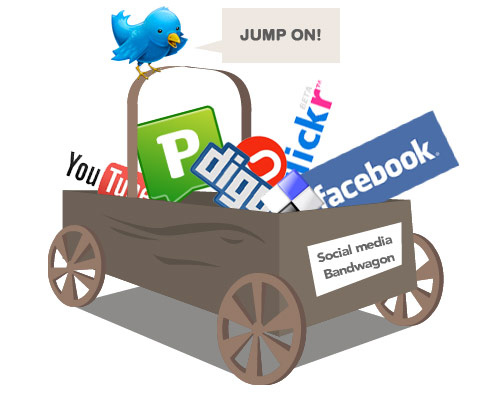"COMMUNICATION: LIVE" BY KONRAD WYREBEK AT SAATCHI GALLERY, LONDON
It wasn't long ago that I was your average internet user. More proficient than many, but not nearly as tech-savvy as some, I averaged a couple hours of every day online. I relied on the internet for everything from "catching up" passively with friends through their updated statuses and blogs, reading the news of the world, checking email, updating my blog and Tweets, shopping, and looking up interesting upcoming events. But among all of that, I tended to either ignore or delete the clutter generated by the various organizations that I demonstrably supported via my social networks and email-list affiliations.
Always happy to support by joining a group or becoming a fan, my participation stopped there. I rarely checked the list of updates on my Facebook homepage, or weekly inbox-fillings of "Last Two Weeks of Show! Get Tickets Now!" urgings. Unsolicited updates from these organizations and groups were of little interest to me--if I wanted to know something, I took it upon myself to seek it out.
When my production company established a group on Facebook, our personal friends became our fans--even if they were across the country, unable to attend our shows, and unlikely to donate money. It was, again, a show of support, solidarity, rather than a genuine interest in receiving electronic communication from us. There were no discussions being had, perhaps an occasional "can't come to the show this weekend" or "great performance!" but in general the group seemed little more than a space full of virtual warm bodies.
So why does it surprise (and yes, frustrate) me now that, as administrator of groups on a couple of social networking sites, I see that none of the fans or members seem eager to participate in discussions? The majority of fan- or member-generated content appears to be self-promotion or the occasional specific question (usually going unanswered by other members). Open forums asking for member input to guide administrator-generated content so that it is more pertinent and interesting to the group members have reaped little to no response. One of two comments to a call for feedback included this: "I haven't yet posted because I haven't yet seen anyone with similar interests."
Oh the irony.
Unless this user is sifting through the 640 other profiles of group members, he presumably is waiting for this like-minded stranger to make himself known. How? Probably by starting a discussion or posting a news item.
As I am becoming all too aware, that isn't likely to happen. In the occasional instance when there is a member-posted news item or discussion, the number of views it receives tend toward the single-digits (out of, I remind you, 641 members).
So why do organizations have hundreds of passive fans? Why do groups have thousands of silent members? Are these people hoping to be spoon-fed information in the manner of an RSS reader (and if so, why are they not viewing news items)? Are they overwhelmed by irrelevant postings (e.g. the self-promotional posts that verge on spam)? Intimidated because they are actually not quite clear whether what they have to contribute will be judged as valuable or not?
I can understand those individuals who accepted invitations to join and as a show of support or because they didn't want to turn down a friend and seem rude, but what about the others who find the organization or group of their own accord, request to join, and THEN lie dormant? Are they just individuals who have their own social media product, like a blog, or website, and hope that their affiliation with another group will generate more traffic for their own project?
And what does this lack of interaction mean for the buzz about social media being a non-profit organization's new best friend?
Please, weigh in!







 A person enters the dome. Bright lights flash. A cornucopia of photos are taken. Many, many computers think. And, Bob's your uncle! A digital, 3D model of their face is created. A rendering so good, it can be then used to create incredibly realistic digital effects in film (think action sequences), video games, and so on.
A person enters the dome. Bright lights flash. A cornucopia of photos are taken. Many, many computers think. And, Bob's your uncle! A digital, 3D model of their face is created. A rendering so good, it can be then used to create incredibly realistic digital effects in film (think action sequences), video games, and so on.
